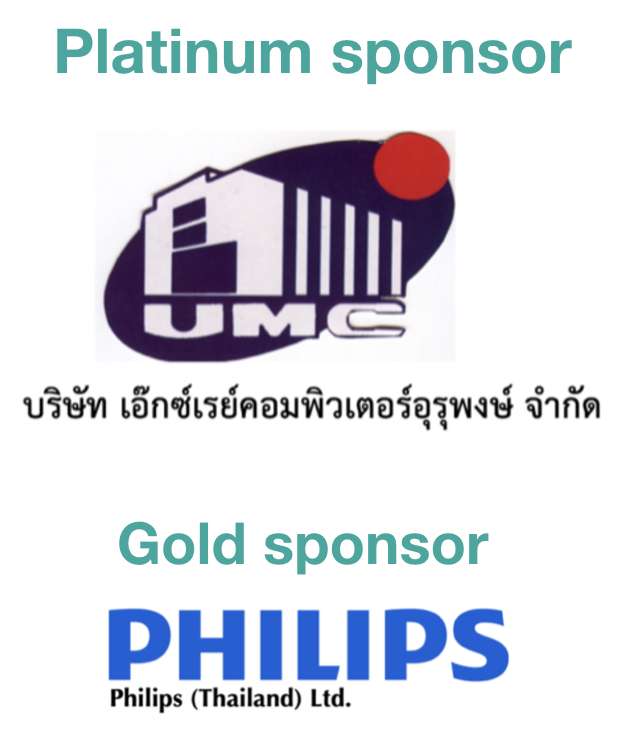The development of application for general radiography in skull
Keywords:
Mobile Application, Skull radiography, Mobile application/ Radiographic positioning/ Android operating systemAbstract
Background: Correct positioning of the patient according to the anatomy to be examined is important in general X-ray work. It affects the quality of X-ray images and the doctor's diagnosis. According to the survey conducted by radiology students and radiologists, patient positioning error mostly occurs in Skull radiography. Meanwhile, smartphones have become more and more active in daily life. From the problem, researchers were interested in creating a smartphone application providing patient positioning information and techniques of craniofacial imaging in general x-rays.
Objective: To develop a mobile application for providing patient positioning information and techniques of craniofacial imaging in general x-rays.
Material and methods: The “Cranix” application was developed via the "Thunkable" website, which can be used for both iOS and Android operating systems. For assessment of the application and the satisfaction of using the application, there were inquired by radiological technology students from various universities and radiological technologists in Thailand by the System usability scale (SUS) and Linkert scale.
Results: From 105 users, the result showed that the application was efficient at finding all necessary information. The satisfaction assessment was 4.40 ± 0.60 at a very good level and the assessment of SUS score was averaging by 80.69 ± 13.55 at an acceptable level.
Conclusion: “Cranix” application can provide all the necessary information and make it easy to find and reduce the time spent for searching information for radiological technology students and radiological technologists.
Downloads
References
สมหมาย กันทะเมืองลี้. การวิเคราะห์ภาพดิจิตอลทางรังสีที่ไม่สามารถนำไปวินิจฉัยโรคได้ โรงพยาบาลนครปฐม. วารสารสุขภาพภาคประชาชน 2560; 12(4): 28-35.
Yurt A, Tintas M, Yuksel R. Reject analysis in digital radiography: a prospective study. Int J Anat Radiol Surg. 2018;7:31-4.
Lin CS, Chan PC, Huang KH, Lu CF, Chen YF, Lin Chen YO. Guidelines for reducing image retakes of general digital radiography. Advances in Mechanical Engineering. 2016 Apr 13;8(4):1687814016644127.
นฤมาน ภัทรชยากุล. การศึกษาภาพดิจิตอลทางรังสีที่คัดออกในระบบเอกซเรย์ดิจิตอลแบบ DR โรงพยาบาลสุราษฎร์ธานี. วารสารวิชาการแพทย์เขต 11, 2563; 34(4), 138-148.
พัทธนันท์ คงทอง และ ปัญญา โรจนวรรณ. ฟิล์มเสียจาการถ่ายภาพรังสีวินิจฉัย โรงพยาบาลศูนย์ตรัง. วารสารวิจัยสาธารณสุขศาสตร์ มหาวิทยาลัยขอนแก่น. 2555; 5(2): 21-28.
สำนักงานสรรพสามิตพื้นที่อุดรธานีสาขาเพ็ญ. Smart Phone. (2558). (อินเทอร์เน็ต) เข้าถึงเมื่อ 13 ตุลาคม 2565 เข้าถึงได้จาก https://www.excise.go.th/cs/groups/public/documents/
document/mjaw/mdk1/~edisp/webportal16200095600.pdf
Fernández-Lao C, Cantarero-Villanueva I, Galiano-Castillo N, Caro-Morán E, Díaz-Rodríguez L, Arroyo-Morales M. The effectiveness of a mobile application for the development of palpation and ultrasound imaging skills to supplement the traditional learning of physiotherapy students. BMC medical education. 2016 Dec; 16(1): 1-7.
Székely A, Talanow R, Bágyi P. Smartphones, tablets and mobile applications for radiology. European journal of radiology. 2013 May 1; 82(5) :829-36.
Al-Hasani H, Abboudi H, Ninan T, Shaygi B, Roobottom C. Smartphone applications for the radiologist. Open Journal of Radiology. 2013 Dec 24; 2013.
พิชฌาย์วีร์ สินสวัสดิ์. แอปพลิเคชันคำนวณยากลุ่มเสี่ยง. วารสารวิชาการ"การประยุกต์ใช้เทคโนโลยี สารสนเทศ". 2562; 5(1): 42-51.
บุญชัย นิตยสุภาภรณ์, ฟาซอล โต๊ะเส็น, ธนพล พวงพุ่ม และ ลัคนา อภิปัญญาโสภณ. การพัฒนาและ ประเมินแอปพลิเคชันบนโทรศัพท์มือถือ CUFastTech สำหรับการถ่ายภาพเอกซเรย์ทั่วไป. วารสารรังสีเทคนิค. 2564 ;45(1):1-7.
Bontrager KL, Lampignano JP. Textbook of radiographic positioning and related anatomy. Elsevier Brasil; 2014.
อำพลพรต วงค์เปี่ยม. คู่มือการถ่ายภาพเอกซเรย์สำหรับนักรังสีเทคนิคมือใหม่. พิมพ์ครั้งที่ 1. สำนักพิมพ์มหาวิทยาลัยรังสิต, 2558.
Kanitta choochawna. (2555) การถ่ายภาพเอกซเรย์กะโหลกศีรษะ (plain skull) (อินเทอร์เน็ต) เข้าถึงเมื่อ 16 กุมภาพันธ์ 2565 เข้าถึงได้จาก https://www.gotoknow.org/posts/242411
MARKINGDOAPP. (2560) สร้างแอปพลิเคชันด้วย Thankable เบื้องต้น.; ITTIPON-24 (อินเทอร์เน็ต) เข้าถึงเมื่อ 6 มิ.ย.2564, เข้าถึงได้จาก https://www.mebmarket.com/index.php?
action=BookDetails&book_id=64982&page_no=1
มาโนชญ์ แสงศิริ (2562). Thunkable เว็บไซต์สร้างแอพพลิเคชั่นสำหรับมือใหม่ (อินเทอร์เน็ต) เข้าถึงเมื่อ 16 กุมภาพันธ์ 2565 เข้าถึงได้จาก https://www.scimath.org/article-technology/item/9099-thunkable
กิตติพงศ์ เซ่งแก้ว, นันท์นภัส เนื่องจำนงค์,นภัส กุลภักดี. การพัฒนาแอปพลิเคชันบนสมาร์ตโฟนสำหรับการเรียนรู้การสร้างภาพด้วยเครื่องสนามแม่เหล็กไฟฟ้า The Development of Smartphone Application for Magnetic Resonance Imaging Learning (วิทยานิพนธ์ปริญญาวิทยาศาสตร์บัณฑิต). กรุงเทพฯ:วิทยาลัยวิทยาศาสตร์การแพทย์เจ้าฟ้าจุฬาภรณ์ ราชวิทยาลัยจุฬาภรณ์; 2563
Chanala Wilangka. (2560). เก็บตกคู่มือการเทส จาก Usability Testing Workshop (อินเทอร์เน็ต) เข้าถึงเมื่อ 13 ตุลาคม 2565, เข้าถึงได้จาก https://chanalaaa.com/ux-workshop-usability-testing/
Brooke J. SUS-A quick and dirty usability scale. Usability evaluation in industry. 1996 Jun 11;189(194):4-7.
บุรินทร์ รุจจนพันธุ์. (2558). Likert Scale (อินเทอร์เน็ต) เข้าถึงเมื่อ 13 ตุลาคม 2565, เข้าถึงได้จาก https://www.thaiall.com/blog/tag/likert/

Downloads
Published
How to Cite
Issue
Section
License
Copyright (c) 2023 The Thai Society of Radiological Technologists

This work is licensed under a Creative Commons Attribution-NonCommercial-NoDerivatives 4.0 International License.
บทความที่ได้รับการตีพิมพ์เป็นลิขสิทธิ์ของสมาคมรังสีเทคนิคแห่งประเทศไทย (The Thai Society of Radiological Technologists)
ข้อความที่ปรากฏในบทความแต่ละเรื่องในวารสารวิชาการเล่มนี้เป็นความคิดเห็นส่วนตัวของผู้เขียนแต่ละท่านไม่เกี่ยวข้องกับสมาคมรังสีเทคนิคแห่งประเทศไทยและบุคคลากรท่านอื่น ๆในสมาคม ฯ แต่อย่างใด ความรับผิดชอบองค์ประกอบทั้งหมดของบทความแต่ละเรื่องเป็นของผู้เขียนแต่ละท่าน หากมีความผิดพลาดใดๆ ผู้เขียนแต่ละท่านจะรับผิดชอบบทความของตนเองแต่ผู้เดียว




